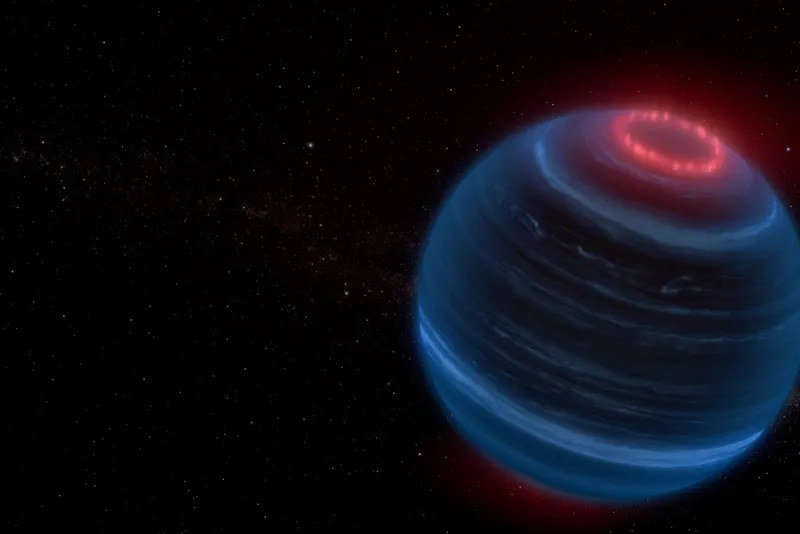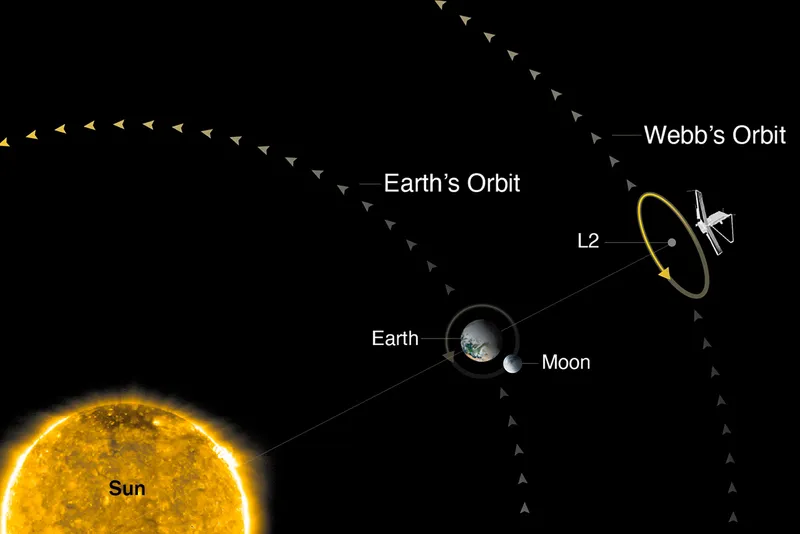Brown dwarfs, often referred to as ‘failed stars’, are a funny kind of celestial body – too large to be classified as a planet, but too small to kick off the fusion processes required to be a fully-fledged star.
One such brown dwarf is named WISEP J193518.59–154620.3 (known as W1935 to its friends), on which astronomers think they may have uncovered evidence for aurorae, similar to the mesmerising Nothern lights we observe towards the north and south poles here on Earth, although thousands of times brighter.
The study, which was published in the journal Nature, used NASA’s James Webb Space Telescope (JWST) to observe W1935, which in galactic terms is located in our neighbourhood, about 47 light-years from Earth.
When the tennis court-sized space telescope was pointed in the direction of the brown dwarf, the team noticed an unusual glow.
undefined
“We expected to see methane because methane is all over these brown dwarfs. But instead of absorbing light, we saw just the opposite: The methane was glowing,” said Dr Jackie Faherty, lead author of the study. "My first thought was, 'What the heck? Why is methane emission coming out of this object?'”
Co-author Dr Ben Burningham told BBC Science Focus that when hunting for alien aurorae on cooler objects like W1935, astronomers typically searched for emissions from other gases that would be higher up in the object's atmosphere.
"No one expected methane emission to be important, though now (of course) it seems like an oversight," he said.
Computer modelling of W1935, used to try and explain the strange methane emission, provided another surprise: it likely has a temperature inversion, where the atmosphere becomes warmer with increasing altitude.
This phenomenon is common in planets orbiting stars but is unexpected for an isolated object like W1935, which lacks an apparent external heat source.

Burningham commented: “We were pleasantly shocked when the model clearly predicted a temperature inversion. But we also had to figure out where that extra upper atmosphere heat was coming from.”
To unravel this mystery, the researchers turned to our own Solar System, examining Jupiter and Saturn, which also exhibit methane emission and temperature inversions.
The cause of these features on our Solar System giants is aurorae – spectacular light displays resulting from high-energy particles interacting with the planet's magnetic fields and atmospheres.

Aurorae are known to heat the upper atmospheres of planets, which would fit nicely with the team’s observations.
And yet, one final piece of the puzzle was missing. High energy aurora-causing particles in our Solar System come from the Sun, blown out as solar wind into space. However, W1935 lacks a host star (making it 'rogue'), ruling out solar wind as a possible explanation.
The researchers speculate that an active, yet-to-be-discovered moon might be responsible for the observed alien aurora on W1935. Similar moons around Jupiter and Saturn are known for violently ejecting material into space, in a process which enhances aurorae on the gas giants.
“With W1935, we now have a spectacular extension of a Solar System phenomenon without any stellar irradiation to help in the explanation,” Faherty remarked. “With Webb, we can really ‘open the hood’ on the chemistry and unpack how similar or different the auroral process may be beyond our Solar System.”
About our experts
Jackie Faherty is a senior scientist and senior education manager jointly in the Department of Astrophysics and the Department of Education at the American Museum of Natural History. She works at the forefront of brown dwarf and exoplanet atmosphere detection and characterisation, as well as striving to create more opportunities for underrepresented minorities to enter STEM fields through unique outreach endeavours.
Ben Burningham is an associate professor and director of outreach and public engagement at the Department of Physics, Astronomy and Mathematics, University of Hertfordshire. His research speciality is all things brown dwarfs – simultaneously sub-stellar and super-planetary objects. Ben has contributed to studies published in the journals The Astrophysical Journal, Nature and The Astronomical Journal.
Read more: